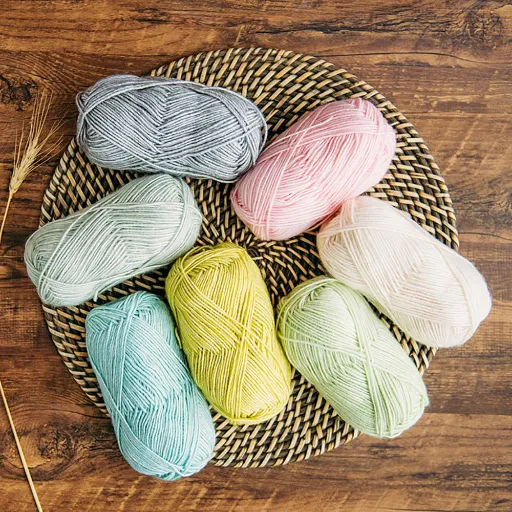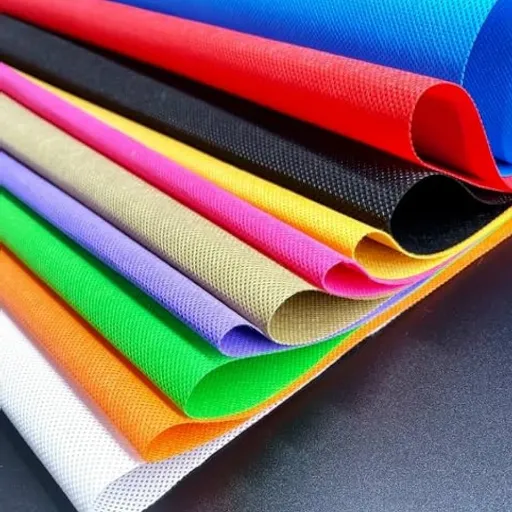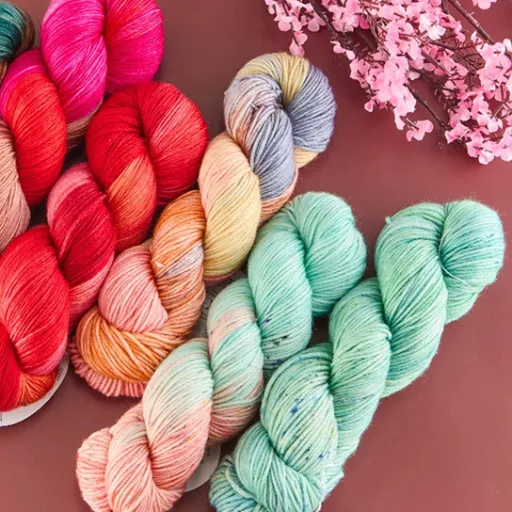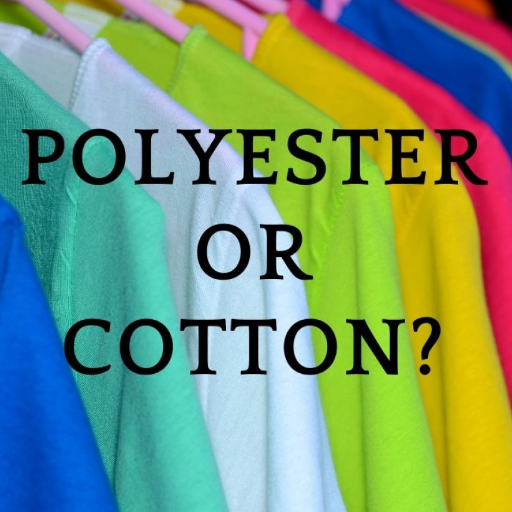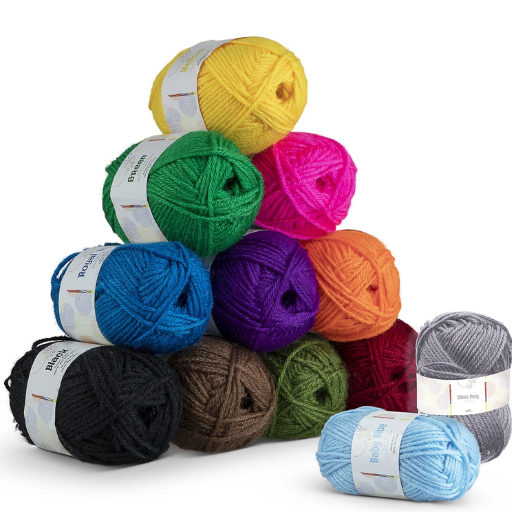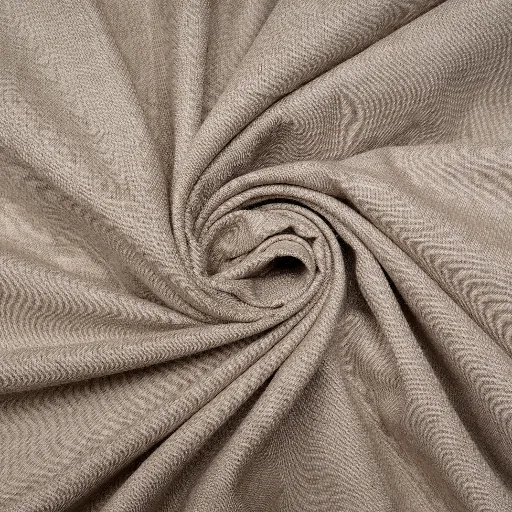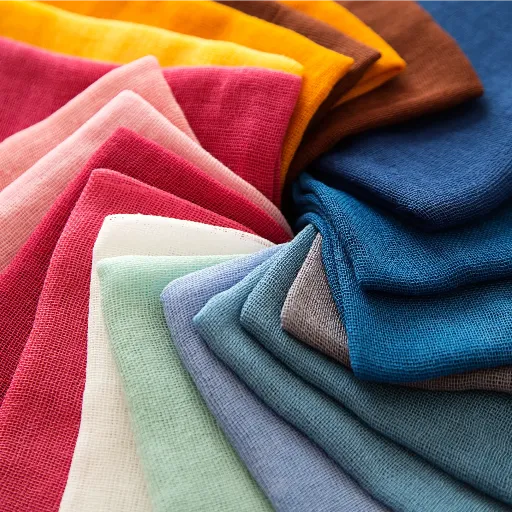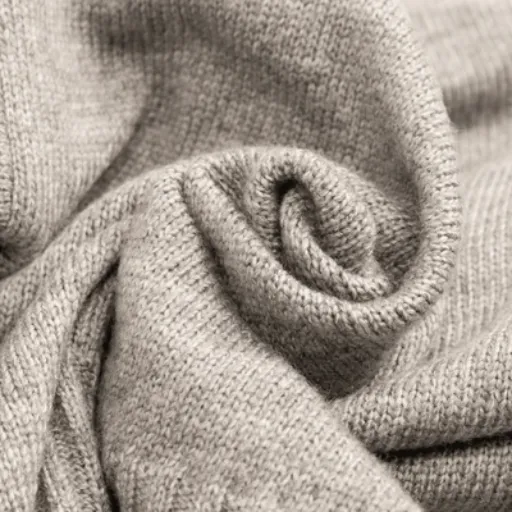Knitting with acrylic yarn which is less expensive and suitable for various designs it provides endless possibilities for a creative mind. Acrylic has the key advantages of being cheap and long-lasting, while being comfortable to wear, making it perfect for even the most innovative of people. Acrylic yarn is most suitable for cladding but can also be used for a variety of other purposes, notably due to its visual appeal, low heat retention, and cost-effectiveness. We will explore how acrylic yarn can be used creatively, while also understanding why avid knitters prefer it in their projects. In the end, you will start to see how acrylic yarn can shape your envisaged projects and why it should not be viewed as dead weight in your knitting equipment.
Understanding of the Acrylic Yarn
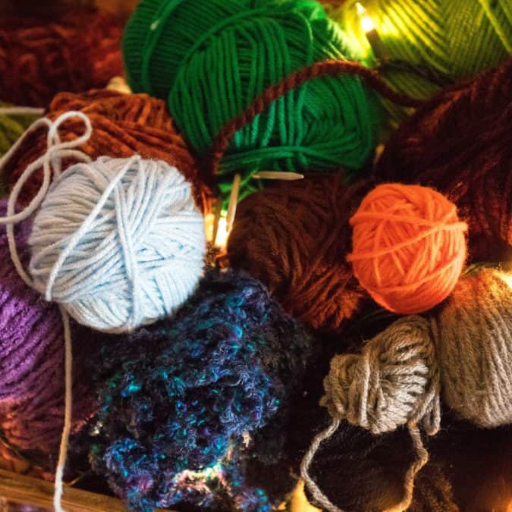
Acrylic fiber is created out of acrylonitrile a synthetic material synthesized from carbon and other elements, and is then transformed into thin flexible filaments. The main purpose of acrylic yarn is to resemble natural fibers like wool while proving to be extra strong as well as cost-efficient for most, if not all, purposes. This fiber is soft, bulky, and smooth, and does not allow the insects, such as the moth, to destroy the knitwear, hence it suits all knitters regardless of their experience levels. They are also non-hygroscopic and can be machine-washed, as well as remain fade-resistant, making them ideal for the creation of suitable clothes.
Properties of Acrylic Yarn
- Durability
Acrylic yarn is quite durable and withstands abrasion, proving it to be more ideal for high-activity uses and protective outerwear, which means long-lasting fabrics and accessories could still be made out of it due to the less abrasion.
- Lightweight
The fabric created by acrylic yarn is relatively light and with a lower woolen content in the fiber, items made from the fabric do not only look attractive but also are light in weight. Such garments as scarves, sweaters, and particularly for large warm blankets will be possible without sacrificing the comfort factor.
- Thermal Insulation
In terms of thermal properties, acrylic yarn is better than wool but has similar capabilities along with other fibers. This makes the material ideal for manufacturing items for cold conditions.
- Moisture Resistance
The amount of water a fabric made of acrylic fibers can acquire is minimal. Normally, one may state that it is less than 2% of water by weight. This attribute is essential because it saves the garment from collecting water retarding its drying.
- Moth and Pest Resistance
Acrylic yarn is naturally resistant to pests such as moths and similar, unlike wool which is prone to being attacked. Thus, acrylic yarn is perfect for storage, and it does not necessitate much effort to take care of.
- Color Retention
Moreover, acrylic yarn dyes well and maintains its color very well. It is highly fade-resistant even when it is subjected to sun for long periods of time.
How Acrylic Yarn is Made?
Acrylic yarn is produced through a series of productive processes; first, a plastic is formed into a fiber. Acrylic is a synthetic fiber derived from a compound called acrylonitrile which is made trough a reaction of propylene and ammonia. Once the plastic is created, it is either wet or dry spun in a device called a spinnerette which extrudes the liquid polymer into thin fibers like threads.
The fibers are then oriented, in the sense of stretching, so that they attain the required strength and elongation. There is also the stage that involves crimping of fibers and cutting into pieces of certain sizes, or the fibers themselves are maintained as filament, depending on the intended use.
The fibers, at this stage, are used for dyeing with synthetic dyes. However, the use of dyed fibers involves quite a number of techniques for making the dyes penetrate better. The dyed fibers are enveloped in strands or spun to form yarn and occasionally some other finishing agents, such as softeners or anti-pilling chemicals, are incorporated in the process. The so-obtained yarn is vivacious, light, and multifunctional that can be applied anywhere from drip textiles to garments and outerwear of different designs.
Acrylic vs. Natural Yarns
|
Parameter |
Acrylic Yarns |
Natural Yarns |
|---|---|---|
|
Raw Material |
Synthetic, derived from petrochemicals |
Plant or animal-based natural fibers |
|
Durability |
High resistance to wear and weather |
Varies, often less resistant to wear |
|
Moisture Absorption |
Low, resists moisture absorption |
High, absorbs moisture readily |
|
Softness |
Moderately soft, enhanced by finishes |
Naturally soft depending on fiber (e.g., cotton, wool) |
|
Insulation |
Good thermal insulation |
Highly dependent on the fiber source |
|
Maintenance |
Easy to clean, machine washable |
Often requires special care, may shrink |
|
Cost |
Generally less expensive |
Varies, can be costlier than acrylic |
|
Environmental Impact |
Non-biodegradable, less eco-friendly |
Biodegradable, more sustainable |
|
Dye Affinity |
Takes synthetic dyes well |
Accepts dyes naturally, may fade |
|
Common Uses |
Apparel, upholstery, outdoor gear |
Clothing, bedding, luxury textiles |
Benefits of Using Acrylic Yarn
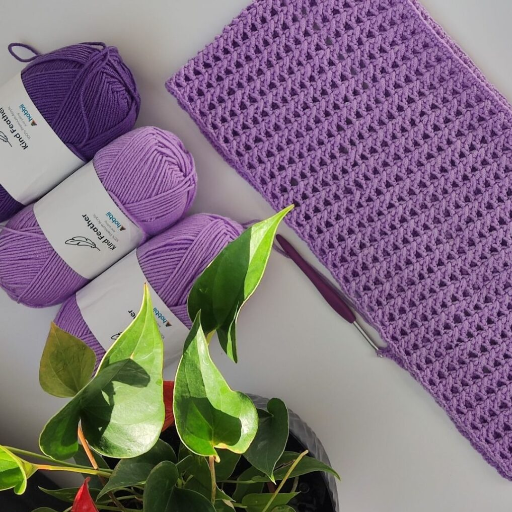
- Cost-Effective
Acrylic yarn is more stringent on production budget than other fibres like wool and cotton. It is of a low cost to products and fashion design seekers due to fewer production cost requirements.
- Durability
Acrylic yarn has the property of being strong, or rather not getting torn when in use for a long time. In other words, it is hard to stretch out of shape and hard-wearing, leading to it being used in more laborious projects, like cushions, blankets, mats, care, and outerwear, which are made in such a way that they remain in good condition for an extended period.
- Hypoallergenic Properties
One advantage of acrylic is its low allergenicity which means it is likely to be accepted by a wide range of people, contrary to wool and other natural fibers
- Lightweight Nature
The main advantage of this quality is that it is hard to damage items made of acrylic yarn even if they were initially breakable. This is particularly important size acrylic knitting is considered light in spite of its toughness which means it is easy and comfortable to produce most dazzling things such as scarves and sweaters.
- Color Retention
Wearing such a fabric is comfortable in addition as the fabric absorbs the dye exceedingly well leading to the formation of attractive colors that are highly washable without staining or wear and tear.
- Weather Resistance
Polyester can resist moisture and bacteria, so it is perfect to be used in places prone to dampness and also suits for outdoor settings. On top of that, it is water repellent as well and hence makes polyester very feasible for day-to-day usage.
Durability and Longevity
Acrylic fiber is specially designed to be quite long-lasting, which is why it is mostly used in projects that you know will undergo some level of abuse. Being made of artificial fibers, it is possible to ensure that its form does not degrade with time even with regular stitching up, withstanding the problem of burs and dampening. Contemporary technology in manufacturing has greatly improved its performance as even with regular soaking in warm water, most of such products remain strong. This is in addition to the fact that, polymer science developments have led to stronger fibers, thus less likely to break when stressed. This combination and the fact that it doesn’t cost much to maintain makes acrylic yarn perfect when one is in need of a long-lasting working material for either crafts or industrial purposes
Affordability: Acrylic Yarn is Less Expensive
Cost-wise, acrylic yarn ranks as one of the best options available to customers with an edge over other natural fiber types like cotton or wool. Its production sits on a base of petrochemical substances; in the most up-to-date and economic context, production is based on synthetic polymers and produced with high-tech and high-productivity technology, which enhances the process technology, which lowers the cost of raw materials and ensures the uninterrupted supply of the product thus lowering the cost of the end product. Moreover, the lifespan of the durable acrylic yarn reduces the frequency of changes in finishes, even for the large projects, saving on end costs. This in turn reduces the cost of the finished project due to the fact that acrylic yarn is very unlikely to wear out quickly, even in large projects, and a longer time elapsed between refinishing processes. For all those individuals who are art crafters on a low budget and designers with a preference for voluminous yarn, acrylic will definitely satisfy them in terms of ease of use and cost.
Easy to Care for: Maintenance Tips
- Washing Instructions
Polyester cannot be dry cleaned but is capable of washing in machine for the convenience of people who have very busy schedules. Rinse with cold or warm (no higher than 104°F/40°C) water to avoid “over wash” . For this type of clothes, a delicates or gentle cycle is the best option, as it will reduce the much-needed wash out of the dresses.
- Detergents
It is also advisable not to use, any harsh chemicals or bleaches when washing the clothes. Such substances can cause the fabrics to lose their luster as well as color over time. For expensive and handmade items, a wool-specific detergent or a mild soap may be used.
- Drying Methods
Acrylic fiber yarns are best left to dry lying flat so as to maintain their original shape. Place the damp yarn on a dry towel and gently tug the fabric to its proper shape but with caution. Although it is possible to dry knits with this machine, use the tumble dry on a lower heat setting to avoid shrinking such fabrics as acrylic which are produced from plastics and hence heat melts such materials.
- Storage Guidance
Cotton, Viscose, and Acrylic Yarn Clothing should be kept in a cool place that does not receive a great deal of light. To protect the yarns and the finished pieces from the sun, which would pilfer the energy of the colors, making them muted in the process. For more safety, especially against dust and insects, wrap the clothes in breathable storage bags or boxes, etc.
- Pilling Prevention
Common Uses for Acrylic Yarn
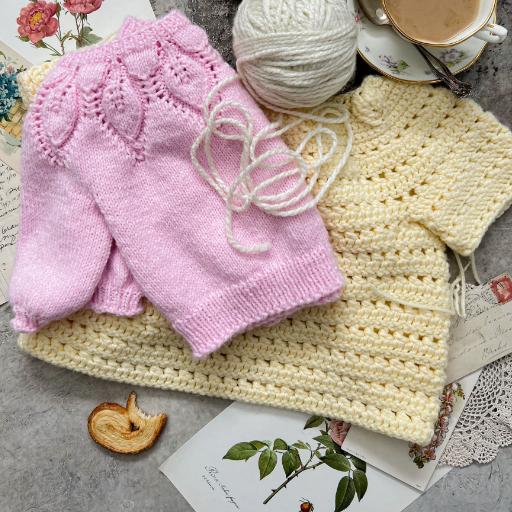
Because it can be found at a pocket-friendly price and is not difficult to use in intricate cleaning steps, acrylic yarn has acquired a very wide utility scope where has to be employed. However, the emphasis should be on safety concerns in use lighter dies while making scientific garments:
- Clothing and Accessories
Then the acrylic yarn is used when the hands or fingers are quite busy in doing certain activities.
- Home Décor
Wool and cotton yarns remain some of the most popular materials for blankets, afghans, cushion covers, and much more due to their soft and warm qualities as well as their ease when it comes to cleaning and keeping clean.
- Craft Projects
Recommended to novice crafters, acrylic yarn is extensively used in such types of works as woven products, including hand-woven fabric, amigurumi (knitted toy animals), and creative decorations.
Knitting with Acrylic Yarn: Project Ideas
The feasibility of inventory control is always affected due to transportation. This is because the firm is always faced with the dilemma of either holding more inventory in order to increase the rate of purchasing or holding lower inventory by adopting a high-quality transportation system. The best way of asserting the magnitude and the type of transportation the firm should use is by first estimating the benefits and costs of inventory. Generally, high transportation costs are justified by high inventory costs and vice versa. Nevertheless, there is no established mathematical formula for determining a trade-off level of inventory and transportation. Rather, this can only be established empirically, depending on the distribution, scale of rendering service, and the end situations where the actual extent of service is to be realized.
Creating Blankets with Acrylic Yarn
All those in need of a versatile material, which exhibits strong, durable qualities, is quite cost-efficient, and that is highly manageable, would consider acrylic yarn a perfect choice for their endeavors in the making of a blanket. The element of synthetic fibers operating in the structure makes the acrylic yarn wear, chic, and even the pilling rate on this texture is almost non-existent. This in turn, makes the coverage of the finished article last longer. Besides, remarkable engineering of acrylic yarn sets the TV stand in a greater scope of interesting designs and lengths, shaping complex configurations well, such as the enabling provision of the cable, lace, or colorwork.
Polymers such as Sweet Lemon yarn are highly desirable for a number of reasons – from the ease with which their colors can be customized, to the yarn’s light weight and how it can be easily knit or crocheted. However, some of these advantages are also potentially the disadvantages of acrylic. Some of the major advantages of using sweet lemon yarn, especially when knitting a blanket with it, are the softness of its touch, the warmth-keeping properties, and quite often the easy-to-maintain nature of the fiber.
After finishing the work on the blanket, it can be very helpful to give some shape to the stitches and improve the overall look by blocking the finished item. Steaming is advised in the case of acrylic yarn when the acrylic fibers, under light pressure, melt a little, which helps the yarn to stay in place while blocking; however, great care should be taken with it, as it only takes a little heat to permanently distort the fabric. It’s just as simple to handle due to the fact that the majority of finished acrylic blanket patterns will be grenadine washable, and the fabric doesn’t gape typically, hence the possibility of shrinkage is also low, which renders the fabric more appealing for everyday use.
Using Acrylic Yarn for Various Crafts
Acrylic yarn boasts a wide range of uses in all kinds of craftwork because of its cheap price, durability, and ease of use. Its synthetic nature resists fading, abrasion, and pilling, assuring its use in very high-use items like blankets, scarves, and mittens. There is also a wide spectrum of colors in which acrylics are available providing excellent grounds for intricate and noticeable designs. The texture of acrylic yarn can be described as soft and weightless, making it suitable for detailed projects and stable corners where all demands are met. Still, acrylic yarn has its function, for example, decorative pillows or wall hangings, which have some additional benefits because it is quite strong and long-lasting. And it is perfect for everyone who is engaged in different techniques, be it knitting or crotcheting, or even Oxford Tapestry Stitch, who will certainly find it useful, for this is a ‘must-have’ material for every ugav craftster.
Comparing Acrylic Yarn to Other Materials
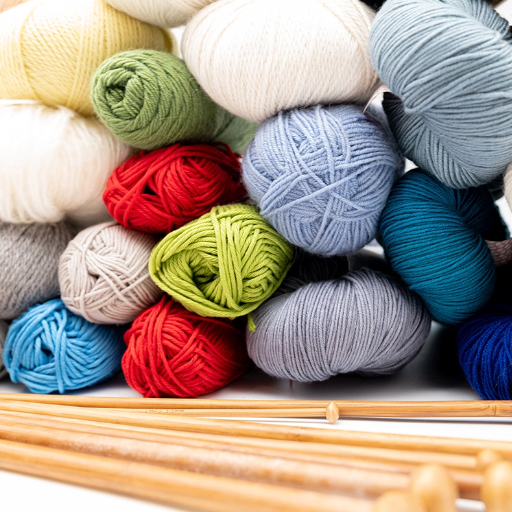
Synthetic fibers have a major advantage over wool and cotton the naturally occurring fibers. Maintenance, wear, and cost are the major factors why one would invest in acrylic yarn in place of wool and cotton. Wool lacks the above features and this is why it shrinks or felts when washed improperly. Cotton, on the other hand, is easy to wash and soft to the feel; however, it has a problem of moisture absorption, especially in humid environments, and this can affect its integrity. On the other hand, it doesn’t absorb moisture and remains strong.
Acrylic vs. Wool vs. Cotton Yarn
|
Parameter |
Acrylic Yarn |
Wool Yarn |
Cotton Yarn |
|---|---|---|---|
|
Durability |
Highly durable and long-lasting |
Durable, but prone to pilling |
Moderate durability |
|
Comfort |
Can feel synthetic or plastic-like |
Soft and warm |
Soft but may lack elasticity |
|
Moisture Absorption |
Low moisture-wicking |
High moisture retention |
Excellent moisture absorption |
|
Insulation Properties |
Low insulation |
Excellent insulating abilities |
Cooling and breathable |
|
Weight |
Lightweight |
Heavier, depending on density |
Medium weight |
|
Care Requirements |
Machine washable, low maintenance |
Hand wash or delicate cycle |
Easy to wash, but wrinkles |
|
Eco-Friendliness |
Synthetic, non-biodegradable |
Generally eco-friendly |
Highly eco-friendly, natural |
|
Cost |
Affordable |
Moderate to expensive |
Moderate cost |
|
Dye/Color Options |
Vast color range, vibrant options |
Limited color options |
Natural tones, fewer dyes |
|
Ideal for Beginners |
Yes, easy to work with |
Less ideal, requires skill |
Good, but can split easily |
|
Stretch and Elasticity |
Low elasticity |
Highly elastic |
Minimal stretch, inelastic |
|
Best Use Cases |
Everyday projects, blankets, decor |
Winter wear, scarves, socks |
Summer garments, lacework |
|
Longevity |
Long-lasting |
Long-lasting with care |
Moderate lifespan |
Environmental Impact of Acrylic Yarn
Since acrylic yarn is not a natural material it is fair to say that acrylic yarn belongs to one of the groups of fabrics that develop static in many cases. In point of fact, it occurs mostly in dry rooms. However, there is a trick that will help you in this case. We rub projects with a fabric softener sheet or turn on the humidifier. Its purpose is to reduce the amount of static electricity remaining in the materials you are working on.
Another vital component of its environmental repercussions concerns microplastics. Synthetic fibers, basically tiny ones, are shed in the process of washing, contaminating aquatic ecosystems and entering the food chain. That process threatens marine life and potentially human health. Dyeing of acrylic yarn opens an additional door to water pollution if the wastes from synthetic dyes and chemicals are not controlled.
Although some recycling of synthetic fiber and increased levels of efficiency in production are being attempted, acrylic yarn carries a huge shadow of pollution. Consumers and manufacturers alike can be directed to greener options, like recycled fibers, so as to reduce their ecological impact.
Tips for Working with Acrylic Yarn
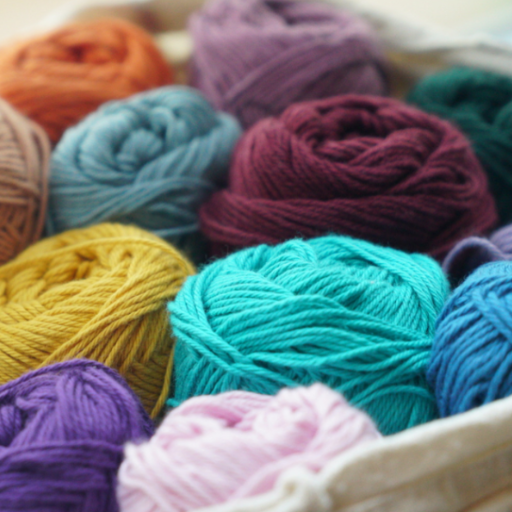
- Choose the Right Tools
Using the correct tools is imperative to work efficiently on acrylic yarns while preserving the integrity of their texture. Acrylic yarn finds best acceptance with hooks and needles which are made of smoother materials like aluminum or plastic so that it does not snag easily. Usual needle or hook sizes for standard acrylic yarn weights run from 4 mm to 5.5 mm (G-I in US standards).
- Avoid High Temperatures
Acrylic yarn is, in fact, a thermoplastic fiber and is thus capable of melting or distorting when subjected to high heat. Very high direct temperature settings should never be used while blocking or ironing acrylic projects; rather, they should be steam blocked with care, keeping the steam source 2-3 inches away from the surface. The melting point of the yarn is generally between 300-500°F (149-260°C).
- Watch for Static Build-Up
Speaking of acrylic fiber made yarn, it owes its positive attributes to lessen its usability rather than concerns about insulation. Static is gone if clothes, always get rid of organic materials, active carbon clothes are particularly good. To mitigate this, use some fabric conditioner or humidify your clothes. Minimize the material subjected to positive charges for easy handling.
- Wash and Maintain Properly
Acrylic fiber authentic wears are manufactured to handle washing easily and resist a lot of wear and tear which can be good. But there is a way to handle them well after making your products. Therefore, complete in the gentle cold or warm water wash and avoid soft dress-up as it may cause the thread to lose its stretch. Please ensure that it is flat when being dried because the adverse effects would include distortion from the dryer’s tumbling action.
- Prevent Pilling
Choosing the Right Needle Size
Determining the correct size of the needle for acrylic yarn use is essential if actual stitch definition and textile form are to be observed in the knitted item. The size of the needle is defined, first of all, by the thickness of the yarn, which can vary anywhere from fine serviceable yarns to yarns which are so thick that they resemble cords. As for fine acrylics, knitting needles that are in the range of US no. 1-3 (2.25-3.25 mm) are advised to use especially if one requires to knit delicate or intricate patterns. Conversely, Weight yarn, for example, the medium kinds, fare well with the use of US no. 7-9 (4.5-5.5 mm) size of the needle, as this stretch, strength, and elasticity offer a background for the ratio of the two. Materials in heavier categories or bullets, such as bulky or super bulky acrylics, may need large needles from US no. 11-15 (8-10 mm) to allow loss of control and its core stability.
For one thing, get swatching done as a matter of checking the appropriateness of the needle size for the task ahead. The way you hold yarn while knitting, and the tightness of the knit, might mean changes to the measured needle size. Ensure that the needle size is in accordance with the project plan, as it changes not only the look but also the use of the final piece.
Techniques for Knitting with Acrylic Yarn
When one chooses to work with acrylic yarn, comprehending its characteristics will prove to be beneficial in ensuring that favorable outcomes are achieved. This fibre is a man-made fabric noted for its strength, cost-effectiveness, as well as the range of designs it can be made into. On the downside, it is not like natural fibres and there are some differences that require different approaches unlike in natural fibres. A particularly important one is tension control, because although acrylic wool can stretch a lot, it is not like wool, which has natural stretch. This discrepancy in development, which ties in with the picture of the fabric, will undoubtedly result in uneven appearance and inadequate stitches for those new to knitting.
In acrylic yarn, particular steps are followed when blocking. Acrylic yarn is essentially a plastic fiber, and as such, wet blocking techniques are not very effective. In such situations, the preferred means is to steam the blocked item in this case, care must be taken not to go overboard with the heat to avoid unwanted melting or damage of the material. Also, the choice of needles within given ranges can make knitting more or less difficult; some knitters may easily prefer smooth metal needles due to their low friction on acrylics.
Reference Sources
-
“Recycling of textiles in India”
- Key Findings: This study highlights the use of acrylic yarn by the Bakkarwal and Gujjar tribes in Jammu and Kashmir. They repurpose old woolen felt blankets by embroidering them with acrylic yarn, transforming them into beautifully needle-worked items. This showcases the cultural and practical applications of acrylic yarn in textile recycling.
- Read the paper
-
“A novel method of dyeing nylon 6, 6 with cold brand reactive dyes and assessment of its fastness properties”
- Key Findings: While primarily focused on dyeing nylon and other fibers, the study mentions modified acrylics as a substrate for reactive dyes. This indicates the versatility of acrylic yarn in dyeing processes, especially for achieving vibrant and durable colors.
- Read the paper
Frequently Asked Questions (FAQs)
Q: What is acrylic yarn good for in knitting projects?
A: Acrylic yarn is a great choice for various knitting projects due to its versatility and ease of care. Many knitters prefer acrylic for items that will see a lot of use, such as baby blankets, throw blankets, and afghans. Unlike natural fiber yarn, acrylic is generally less expensive, making it accessible for charity knitting and other budget-friendly projects. You can easily wash and dry acrylic items in the washing machine, which is perfect for busy lifestyles. Additionally, acrylic yarns are softer, making them comfortable against the skin, especially for children. Overall, if you’re knitting something that needs durability and ease of maintenance, acrylic yarn is an excellent option.
Q: Can I work with acrylic yarn for baby blankets?
A: Yes, using acrylic yarn for baby blankets is a popular choice among crafters. Acrylic yarn is often recommended for baby items because it is soft, durable, and easy to care for. Since many acrylic yarns are machine washable and can withstand dryer use, parents appreciate the convenience. Additionally, if you are allergic to wool, acrylic is a suitable alternative that won’t irritate sensitive skin. Many brands, like Lion Brand and Red Heart, offer baby-friendly acrylic yarn options specifically designed for such projects. Overall, acrylic yarn can provide a safe and practical solution for creating cozy baby blankets.
Q: What are the properties of acrylic yarn compared to natural fibers?
A: Acrylic yarn is a synthetic material that boasts several advantages over natural fibers like wool or cotton. One of the main benefits is that acrylic yarn is generally less expensive than natural fiber yarn, making it an attractive option for those on a budget. Acrylic is also easier to care for, as it can be washed and dried in a washing machine without special treatment. However, while acrylic yarns can feel softer and more comfortable, they might not have the same breathability as natural fibers. Additionally, some people may find that acrylic yarns can be scratchy compared to wool or cotton blends. If you’re knitting or crocheting items that will see heavy wear, acrylic might be the right choice for its durability.
Q: Is knitting with acrylic yarn a good option for beginners?
A: Knitting with acrylic yarn is indeed a great option for beginners. Acrylic yarn is easy to handle, and its vibrant colors and wide range of yarn options make it exciting to work with. Additionally, since acrylic yarn is generally less expensive than natural fiber yarn, beginners can practice their skills without a significant financial investment. The ease of care is another advantage; beginners can simply toss their projects into the washing machine for cleaning. Furthermore, many acrylic yarns are designed to be soft and comfortable, which is ideal for those new to knitting. Overall, choosing acrylic yarn can help foster a positive learning experience for novice knitters.
Q: What are the benefits of using acrylic yarn blends?
A: Acrylic yarn blends, such as those mixed with wool or cotton, offer a unique combination of benefits that can enhance your knitting or crocheting projects. These blends often retain the softness and washability of acrylic while incorporating the warmth and breathability of natural fibers. Many crafters enjoy using acrylic blends for items that need to be durable yet comfortable, such as sweaters or blankets. Additionally, using blends can provide a more premium feel compared to 100% acrylic yarn, making your finished products feel more luxurious. When comparing acrylic vs natural yarns, these blends can provide a middle ground that appeals to both yarn snobs and casual crafters alike. Overall, acrylic blends can expand your yarn options and enhance the variety of textures in your projects.








